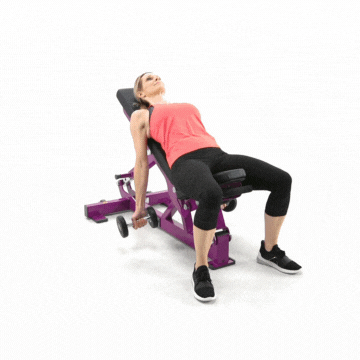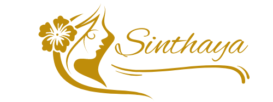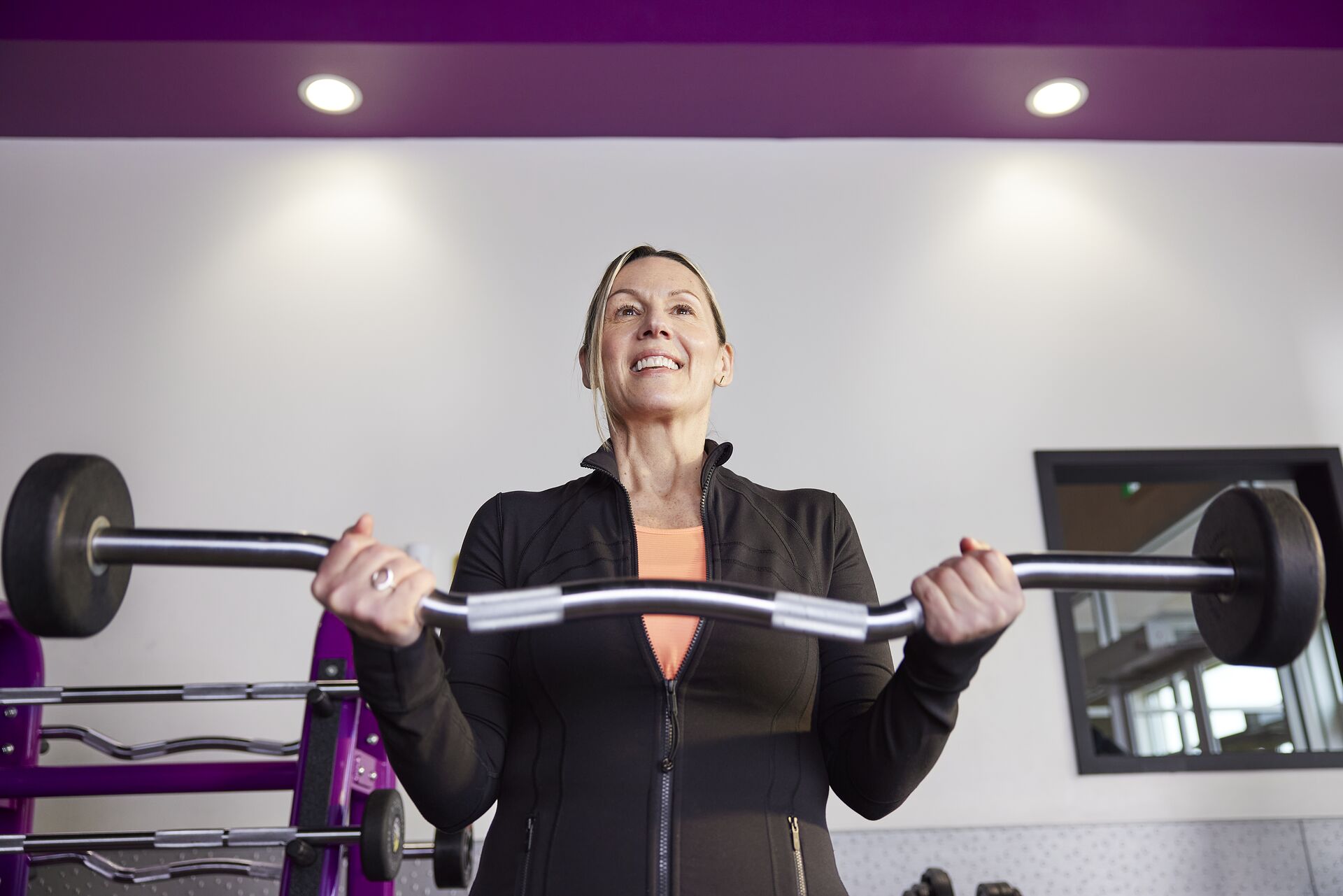7 Best Bicep Workouts for Beginners
Strong biceps aren’t only for professional athletes and bodybuilders. But picking up the dumbbells for the first time can be intimidating.
The good news is—it doesn’t have to be!
At Planet Fitness, we’re obsessed with creating workout spaces that welcome everyone, whether you’re braving the gym for the first time in your 40s or you’ve been working out since high school.
So, without further ado, let’s dive into the massive benefits bicep workouts offer and set you up with seven of the best beginner-friendly bicep exercises.
Can’t wait to hit the weights? Find a club near you for support and expert guidance on beginning your bicep-building journey.
Bicep Workout Benefits
The truth is, if you’ve got arms, you’re already using your biceps each day, inside and outside of the gym.
Adding regular bicep exercises means you won’t lose your range of motion or strength as you age, plus some other awesome benefits like:
- Build Strength & Power: Stronger biceps help strengthen the upper body muscles and build power for everyday activities like lifting, pulling, and pushing.
- Improve Range of Motion: By exercising your biceps, your elbow joints become more flexible and you gain a wider range of motion.
- Support Daily Tasks: Bringing groceries into the house, reaching for items on high shelves, and carrying your kids are much more challenging without functional bicep strength. Regular bicep workouts help you perform regular tasks without difficulty.
- Avoid Injuries: Strengthening your biceps supports and stabilizes your shoulder joints, reducing the risk of injuries the next time you lift something heavy.
- Increase Bone Density: When you use weights to train your biceps, you aren’t just strengthening your muscles — it’s your bones, too. Bicep workouts improve the bone density in your arms by stimulating bone growth.
Which Muscles Do Bicep Workouts Target?
These exercises primarily target the biceps brachii, a.k.a. the large muscle at the front of the upper arm responsible for flexing the elbow. But that’s not the only muscle getting attention!
Bicep workouts also target minor muscles underneath the biceps that assist in flexing the elbows. Zooming in further, these exercises involve the even smaller muscles inside the upper arm that help flex the arm at the shoulder joint.
And it’s not just the upper arms! Bicep workouts also work the front of your forearm to strengthen your grip and stabilize your wrists.
7 Best Bicep Workouts for Beginners
Okay, now that we’ve covered all that, it’s time to dig in!
For this list, we’ve included workouts with free weights and machines. Not sure of the best option for you? We can help!
Need some additional guidance? Most Planet Fitness machines feature QR codes with quick tutorials & tips to help you get the most out of your workout.
Remember to start with a manageable weight for your current strength level to stay safe and avoid injuries.
And as always, don’t forget to stretch before exercising.
Now, let’s get lifting!
1. Bicep Curls
Bicep curls are great for beginners because they use a relatively simple movement and can be done with a barbell or dumbbells.
For dumbbell curls:
- Start with feet shoulder-width apart and knees slightly bent to engage your core. Begin with arms at your sides with palms facing each other and holding a dumbbell in each hand.
- Bend your elbows to lift the dumbbells to your shoulders and pause when they arrive. Maintain a consistent elbow position throughout the movement, but rotate your wrist so your palm is facing up as you reach the top.
- Slowly lower your arm back down and repeat with the other arm. Alternate arms until set is complete.
Remember to keep your elbows close to the torso. Focus on lifting the weights with slow, controlled movements while keeping the rest of your body still and stable.
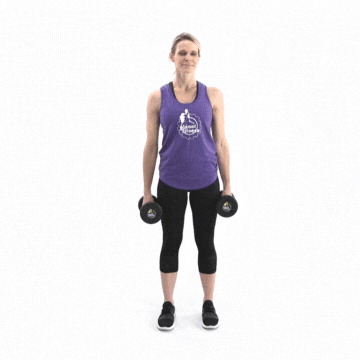
2. Pull-Up Variations
Let’s face it: Pull-ups are few people’s favorites. But they made our best bicep workouts list because of the often-overlooked variations that help gradually build up to traditional pull-ups.
The technique is essential, though. Traditional pull-up technique involves:
- Start hanging from a pull-up bar with an overhand grip—palms facing away from you. Hands should be slightly wider than the shoulders.
- Pull up by bending the elbows until your chin reaches the bar.
- Slowly lower back down and repeat.

Assisted pull-ups and other variations use the same technique, but feet or knees are supported instead of hanging free. Here are a few assisted pull-up support options we like:
- Assisted dip machine, like the one below that you can find at most Planet Fitness locations
- Resistance bands
- A chair
- A stepladder
- A partner

No matter what version you choose, focus on pulling your chest to the bar while engaging the biceps and core. Keep those movements slow and controlled.
Want more pull-up prep? Check out these pull-up substitutes.
3. Hammer Curls
It’s time to give the inner upper arms some attention with hammer curls.
For hammer curls:
- Start standing up straight with arms at your sides, palms facing each other, and holding a dumbbell in each hand.
- Bend one elbow to lift the dumbbell as close to your shoulders as possible, and pause when you reach your highest point. Your knuckles should be facing forward.
- Slowly lower your arm back down and repeat with the other arm. Alternate arms until set is complete.
Avoid leaning forward by engaging your abs and glutes to keep your body standing up straight so you can put all your focus into your arms. Don’t let your wrists twist, and keep your elbows tucked into your body.

4. Preacher Curls
If you want to isolate the biceps completely, the Preacher Curl is the exercise for you. Whether you’ve got a barbell or an official Preacher Curl machine, you’ll begin with upper arms placed on the pad in front of you, with palms facing upward. Then:
- Hold the barbell or the machine’s handles with an underhand grip.
- Bend elbows to curl the bar or handles up, and pause when you reach the shoulders.
- Slowly lower the arms until straight and repeat.
Remember to exhale as you lift and inhale as you lower. Avoid locking the elbows at the end of each rep. And even though you’re sitting, engage that core.
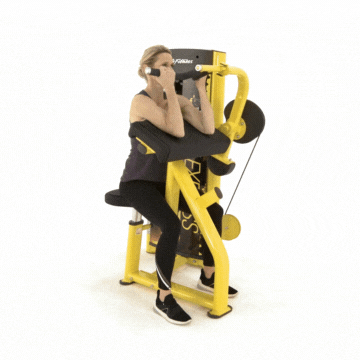
5. Cable Curls
If your gym has a cable machine, it’s an excellent tool for bicep workouts. While looking similar to a standard bicep curl, using a cable, you retain tension through the whole motion of the exercise.
For cable curls:
- Attach a curl bar to your cable machine.
- Stand in front of the cable with your feet shoulder-width apart.
- Hold the curl bar with an underhand grip and your arms pointing straight down.
- Bend your elbows to curl the bar up, and pause once you reach your shoulders.
- Slowly lower the bar back down and repeat.
You can also do cable curls sitting or focusing on one arm at a time. No matter which you choose, remember to keep your elbows tucked into your body and your spine straight. Start with 6–10 reps per set.
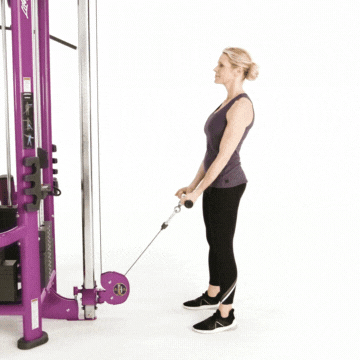
6. Concentration Curls
Limited shoulder movement restricting your bicep workout routine? The concentration curl might be a good choice for you.
For concentration curls:
- Sit on a bench with legs spread apart.
- Hold a dumbbell with your palm facing inward and let your arm extend. Rest elbow on the inner thigh of the same side leg.
- Place the hand without a dumbbell on the same side leg with elbow bent for stability.
- Curl the dumbbell toward the shoulder by bending the elbow but without lifting the elbow from the thigh. Pause at the top.
- Slowly lower the arm to starting position and repeat.
- Complete the same amount of reps with both arms.
Concentration curls can get tricky after a while, so remember to exhale on the lift, inhale on the lower, and keep your elbows tucked into your torso.

7. Incline Curls
By leaning back and letting arms fall behind the body, incline curls increase the curl distance from extended arm to shoulder.
For incline curls:
- Lie on an incline bench with your arms pointing straight toward the ground, extending behind the body.
- Palms facing forward, hold a dumbbell in each hand.
- Bend one elbow to curl the dumbbell toward your shoulder, keeping your palm facing forward.
- Pause at the highest point.
- Slowly lower and repeat on the other side.
Make sure to avoid locking the elbows as you lower the arms.
